Motor Sport Interview: Giancarlo Fisichella
The Italian ace looks back on a career that’s mainly been with his favourite marque – Ferrari
Getty Images
Giancarlo Fisichella notched up more than 200 starts over a 14-season Formula 1 career that took him from Minardi to Ferrari via Jordan (twice), Benetton, Sauber, Renault and Force India. ‘Fisico’ in Italy and ‘Fisi’ in the English-speaking world won a trio of grands prix and claimed four pole positions, yet some of his biggest achievements have come in his post-F1 career.
Fisichella has been on Ferrari’s books since his five-race stint with the F1 team at the end of 2009 – his final F1 outings – and has claimed a pair of class victories at the Le Mans 24 Hours aboard Ferrari GT machinery in 13 participations from 2010-22 and is still going strong at the age of 52.
The Roman continues to race – and win – and remains an ambassador for the Italian manufacturer as he plots life after the day he finally hangs up his helmet.
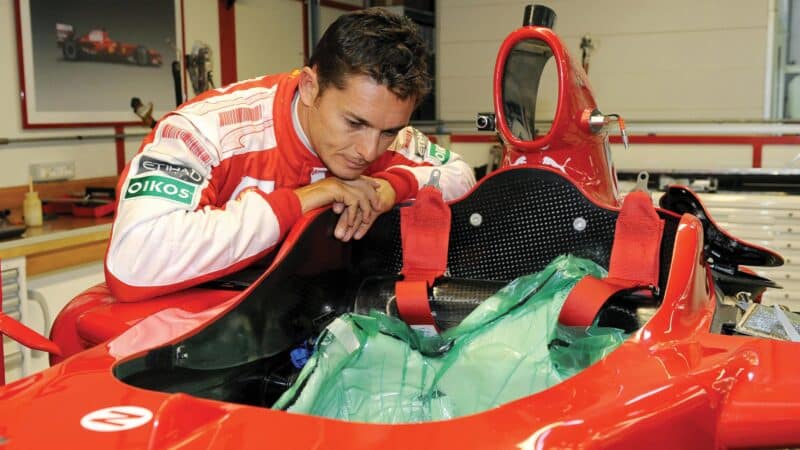
A dream come true for Giancarlo Fisichella – a drive with Ferrari, 2009.
Getty Images
Motor Sport: The final chapter of your time in F1 began with you almost beating Ferrari at Spa in 2009. It opened the door to your phenomenally successful second career in sports car racing. How did it happen that you took the injured Felipe Massa’s seat at the Scuderia that Luca Badoer had kept warm for a couple of races?
GF: After this amazing weekend in Spa with pole position and finishing second behind Kimi [Räikkönen] at the only race Ferrari won that season, I had a call from my manager [Enrico Zanarini]. There had already been some rumours, a little bit of talk about me going to Ferrari, but two days after the race Enrico was on the phone asking me if I was ready to go to Maranello to talk about the possibility of doing the next five races. I said yes straight away; it had been my dream since I was very young to race for Ferrari.
“With the Ferrari there were so many switches and dials“
I knew it was going to be difficult to jump in the Ferrari and be competitive. First of all it wasn’t the best Ferrari F1 car and secondly it had KERS [kinetic energy recovery system] and the Force India didn’t. The way to drive the car was completely different, almost opposite to what I was used to. With a normal car you downshift in the braking zone to stop the car, but with KERS you had to hit the brakes at the end of the braking zone so you can get energy into the battery.
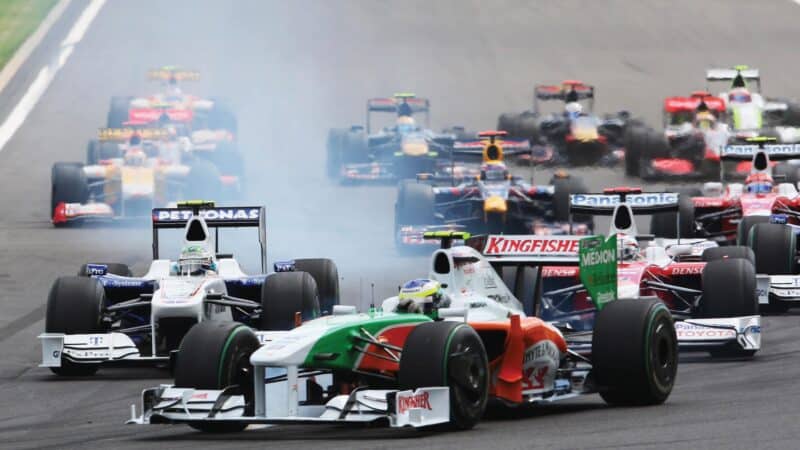
Second place at Spa earlier in ’09 for Force India
Getty Images
That was new to me and then there was the front flap adjustment, something the Force India didn’t have. With the Ferrari there were so many switches and dials, stuff to change over the lap. Corner after corner, I was listening to my engineer telling me what to do!
The other problem was that there was no chance to test the Ferrari before I raced it for the first time at Monza. I didn’t do one kilometre of testing. I went on the simulator, but only on the static sim because the dynamic one made me sick. They still do!
For me everything was new and then I had a little accident in first free practice on Friday morning at Monza. I expected to be a little bit further forward in qualifying and to be able to fight for points. But then Kimi wasn’t really competitive in those five races when we were team-mates.
Do you think you would have got better results had you stayed at Force India and maybe have prolonged your time in F1 into the following season and perhaps beyond?
GF: Yes, but that didn’t matter because I was racing a Ferrari! I was 36 years old, I’d done nearly 230 races at that point and I knew I was coming to the end of my career in F1. Maybe I could have done another year, but it wasn’t going to be in a top car. I thought it was probably time to say goodbye to F1 and racing a Ferrari was a good way to do it.
We started talking about GT racing with Ferrari for the first time, as well as being the third driver in F1 for the following season. Here I am more than 15 years later still wearing a Ferrari shirt — I am an ambassador for them – and still racing their GT cars. I would make the same decision again.
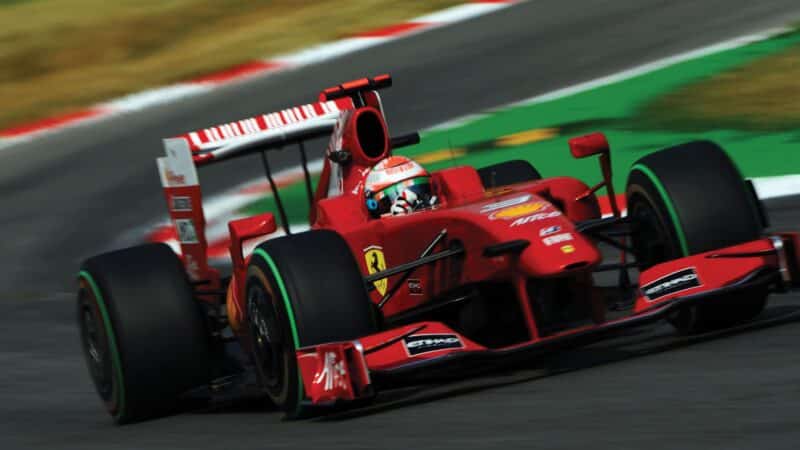
Fisichella’s debut race for Ferrari came at Monza in 2009, the first of five F1 appearances for the Scuderia
Getty images
Among your achievements with Ferrari are two GTE Pro victories at Le Mans in 2012 and ’14 with the factory AF Corse team. How do they stack up against winning a grand prix and do you have a favourite of the two?
GF: Standing on the Le Mans podium with all the fans underneath you is an amazing experience. I have to say in my mind it is equal to winning in F1. Maybe if I had won Le Mans overall in a prototype, I would put it even higher than F1!
The first victory at any race or in any kind of car always means a lot, but Le Mans in 2012 was special. I had destroyed the car in the Porsche Curves in qualifying and the team rebuilt it in time for the warm-up on Saturday morning. We had to start from the back and went into the race not knowing if it would do one lap or 24 hours. But with my team-mates Gimmi [Gianmaria Bruni] and Toni [Vilander] we did if for Ferrari.
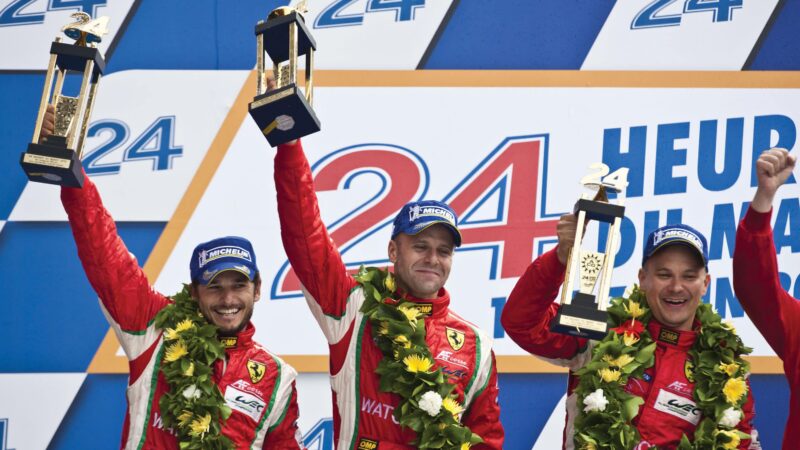
Fisichella, left, with Bruni and Vilander, Le Mans 2012
Getty Images
What about the one you didn’t win, the 2016 race in which you finished a close second after a classic battle between the Risi Competizione Ferrari you were driving and the Chip Ganassi Racing Ford GT?
GF: An amazing race and a brilliant fight. It was like a 24-hour qualifying session. I think with my team-mates [Vilander and Matteo Malucelli] we all did an amazing job. We were not a true factory team, but we were quicker than the No51 and No71 [the two works entries from AF Corse]. Toni had a spin two hours from the end, but that wasn’t the reason we didn’t win. The Ford was a little bit better on performance, or maybe that should be the Balance of Performance! We did the maximum and I believe we got the best possible result. I see that as one of my finest performances at Le Mans.
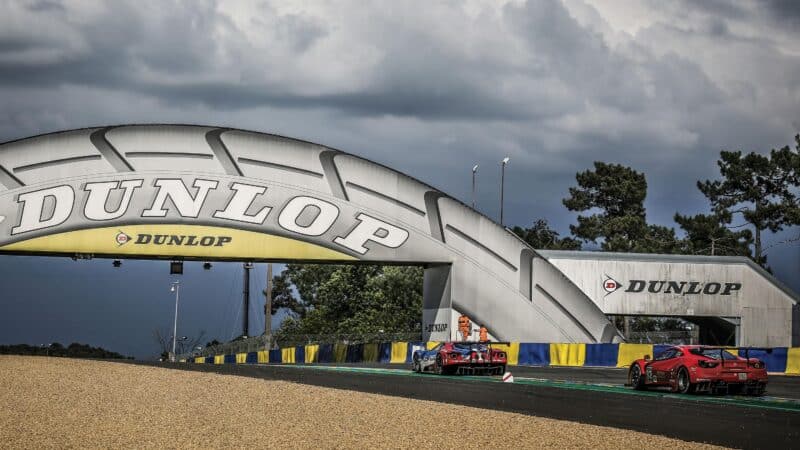
Fisichella’s Ferrari in chase of the Ganassi Ford, Le Mans, ’16
Getty Images
Did it take long to adapt to a GT car after coming straight out of F1?
GF: It was a shock after F1 – less power, less downforce, less grip, less everything! Driving a GT is about getting into the corner earlier, anticipating the corner and jumping over the kerbs. It took me a few months to get used to it, and then I was improving. I had two good references, Gimmi and Toni. They were the masters of the category and in the end I was on their pace.
How did you end up driving an Alfa Romeo 155 V6 Ti in DTM and in International Touring Cars in 1995 and ’96?
GF: My dream was F1, but after I’d won the Italian Formula 3 Championship and the Monaco Grand Prix support race in 1994 with RC Motorsport there was no chance to go to F1 and no budget to move up to Formula 3000. At the end of that season, I had the chance to talk to Giorgio Pianta, the boss of Alfa Corse. I raced the 155 V6 Ti for two seasons but in the second year I was also Minardi’s third driver, a kind of test driver. With two weeks before the first race I received a call from Giancarlo [Minardi] that I would be racing in Melbourne. The team didn’t get the money from a Japanese driver, I can’t remember his name [Taki Inoue], and suddenly I was racing for Minardi.
“I thought, ‘I’m one of them, I’ve done it – I’m an F1 driver!’“
It was a shock. At that point I think I had done maybe only a couple of days of testing in an F1 car, definitely not much more than that. But suddenly I was an F1 driver. I remember in the drivers’ briefing next to me there was Berger, Alesi and Schumacher. I thought, “I’m one of them, I’ve done it – I’m an F1 driver!” It was an amazing feeling to get to F1, even if I only did eight races in ’96. Minardi was always looking for a driver with money: Tarso Marques did a couple of races after I’d driven in Australia and then Giovanni Lavaggi came in for the final races.

Touring cars with Alfa, 1995
Getty Images
How did your first part-season in F1 lead into a full-time drive the following year?
GF: After I did a good job in those races with Minardi, I was given a test with Benetton at Estoril – and I ended up being quicker than Berger and Alesi. Then Flavio [Briatore] called me to London and offered me a five-year contract with Benetton. He told me that Alesi and Berger were under contract for ’97, but that he was going to put me with another team for one season. He called Eddie Jordan and said he should give me a test, and if he thought I was good he could put me in a car for the following season. That led to me driving the Jordan at Jerez. Eddie obviously liked what he saw.
You had an impressive first full season in F1 with Jordan, but why didn’t things work out when you got to Benetton the year after?
GF: The 1997 season at Jordan was a pretty good one. I scored my first points at Imola, got my first podium in Canada and I could have won at Hockenheim but had a puncture. Then there was another podium at Spa, but Benetton wasn’t at the level I was hoping for. The team was losing performance and unfortunately we couldn’t fight for wins and the championship. There were some good results, some podiums in 1998, ’99 and 2000, but then 2001 was a disaster with the new engine, though I got a podium at Spa.
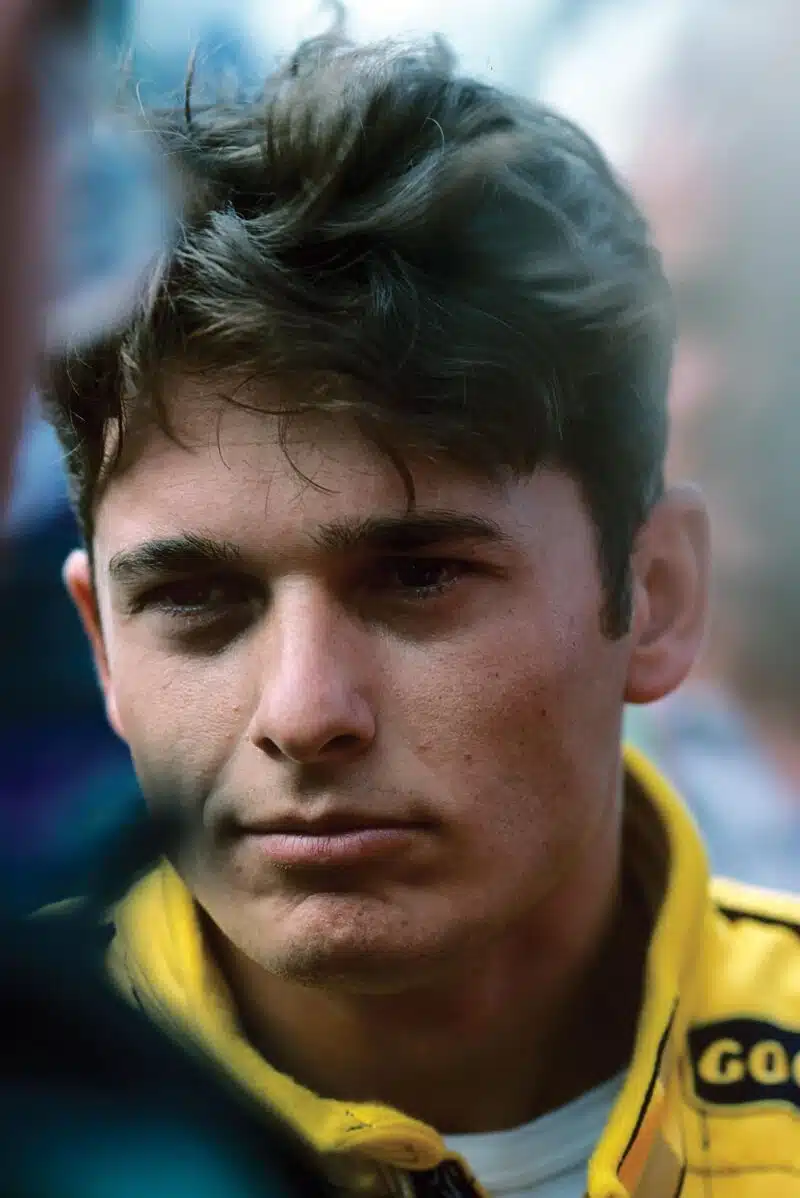
Jordan driver Fisichella, 24, at Hockenheim in 1997; he was frequently among the points during this season
Getty Images
So it was back to Jordan for 2002 to drive a car that wasn’t great but in 2003 you had your first F1 victory in quite extraordinary circumstances at Interlagos when a timing error resulted in you initially being classified second. Did you get on the plane to leave Brazil believing that it was you and not Räikkönen who should have been standing on the top step of the podium after the race?
GF: Listening to what my engineer was telling me, I was a bit confused and thinking that probably I was the winner. Of course, it was disappointing to miss out on celebrating on the top step of the podium when I was told that I had won the race later in the week, but that’s the way it was. I can’t change it.
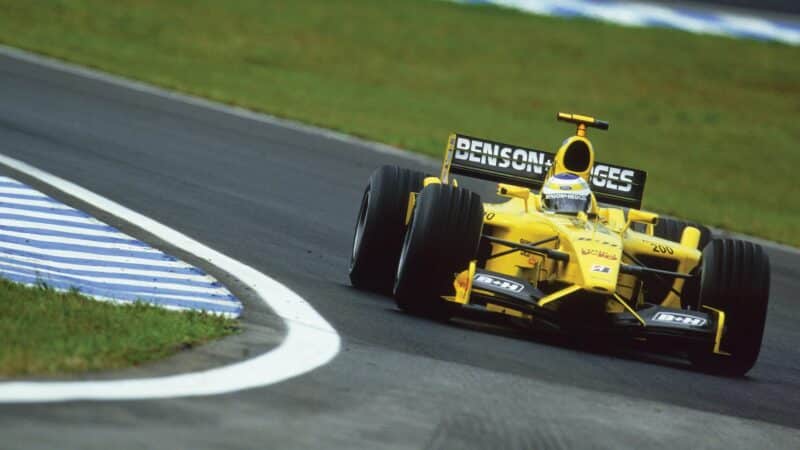
With Jordan, 2003 Brazilian GP
Getty Images
You excelled in the wet conditions at the end of the race in Brazil that day, overtaking Räikkönen crucially two laps — and not one as the timekeepers initially thought – before the red flags came out. Why do you think you excel in the wet?
GF: No one likes racing in the rain. It’s just that some drivers have a good feeling for the car in the rain and some don’t. I had my first pole position in the wet [at the A1-Ring in 1998 with Benetton] and my first win in the wet. I always seemed to have good results when it was raining or damp, but I don’t really know why. It’s not something I can explain.
Tell us how the year at Sauber in 2004 propelled you into a drive with Renault.
GF: Sauber was still a small team, but the car was quite good. Let’s say it was a copy of the Ferrari from the season before, so it was good, though not the best. I scored a lot of points and because of that I got the chance to go to Renault. Briatore called me and said he was impressed with my season and told me that I needed to go back to drive for him in “a real car”.
“I know that more than 10 years ago Ferrari had a look at LMP1“
Honestly I didn’t expect to end up driving such a great car. But at the first test at Barcelona in the first few laps I realised that it was a winner. Then the first race in Melbourne, pole position and the victory. Bang! The next year, I won in Malaysia. There were some good performances, some good results in those two years, but I had some mechanical and technical problems. That meant I wasn’t fighting for the championship.
But my team-mate [Fernando Alonso] was. Fernando was quicker than me, not always, because sometimes I was quicker than him, and in that situation you have to work for the team and your team-mate. Because of that there were a few times when I didn’t achieve what I should have done.

From left, Fernando Alonso, Flavio Briatore and Fisichella, Monaco 2005
Getty Images
Were you surprised at Alonso’s talents when you arrived at Renault?
GF: Not at all. I knew how good he was from karting, the junior formula and then his year at Minardi — he put the car in the middle of the grid – even before he arrived at Renault. He was very strong politically within the team, but we got on well together and we are still friends. I’m happy to have been part of his two titles and the two constructors’ world championships with Renault in 2005 and ’06.
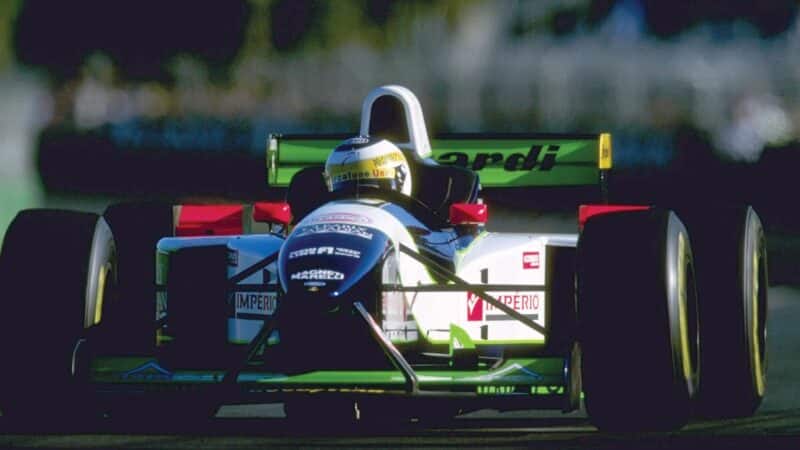
F1 debut, 1996 Australian GP driving a Minardi
Getty Images
How did you start out in the sport? Was there a family connection?
GF: My father used to have a garage and was a big F1 fan. When I was eight years old we went to a kart track near Rome, just to play to begin with. Then I started racing, with him looking after the kart, before we got a proper mechanic. He gave me my passion.
What does life hold for you beyond the end of your racing career?
GF: While I’ve still been racing I have been progressing a company called ProRacing that I started with Marco Cioci [who also raced with AF in WEC] which is managing a few drivers. We already have Aurelia Nobels, who is again racing in F1 Academy this year, and is with the Ferrari Driver Academy. Then there’s Bruno del Pino, who will be doing Formula 3 this year. We have others in karting and Formula 3 and Formula Regional, about 15 in total. I think that is what I will concentrate on when I stop driving.

‘Fisi’ had an impressive 2004 with Sauber and became a wanted man.
Grand Prix Photo
For the past two years you’ve been racing in the long-distance rounds of the Italian GT Championship, winning the endurance championship with Tommaso Mosca and Arthur Leclerc, brother of Charles, with Scuderia Baldini in 2023 and ’24. Is it fulfilling to help young drivers to achieve their full potential?
GF: These drivers are half my age and younger than my daughter – I call them my nephews! My job is to give them a good reference. Even if I am over 50, I still have good pace. Then it is about sharing ideas and working together so they can develop. Arthur was coming out of single-seaters and he adapted well to a new kind of racing.
Do you look with envy at your successors as Ferrari factory sports car drivers who are now getting the chance to race a prototype, the 499P Le Mans Hypercar?
GF: The 499P came too late for me. I know I am too old for that kind of programme. But it is nice to see the young guys doing so well and Ferrari winning. I know that more than 10 years ago Ferrari had a look at LMP1. I was pushing for it!
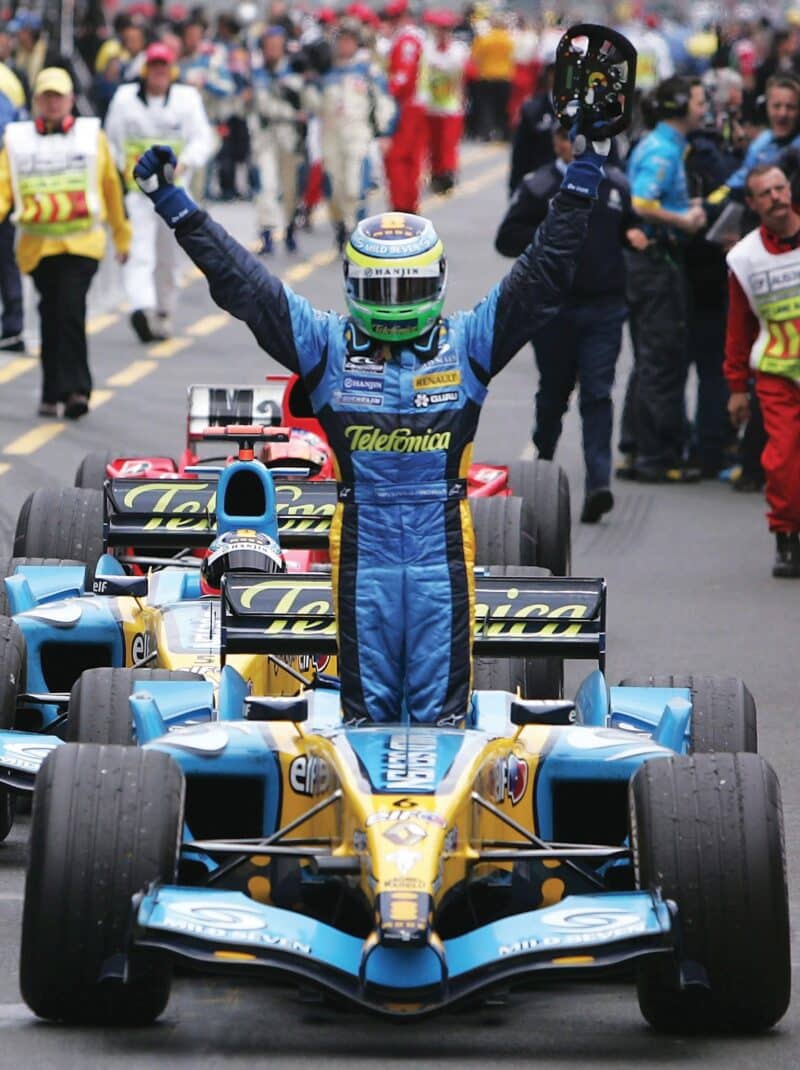
A second of three career F1 wins came at the season-opening Aussie GP in ’05
Getty Images
Do you have any regrets from your career?
GF: My dream was to become F1 champion, but apart from that all my dreams came true. I did 229 F1 races and won three. I’ve stood on the top step of the podium at Le Mans and I’ve won Petit Le Mans at Road Atlanta. I loved racing in America. I’ve also won a championship with Ferrari, the Le Mans Series GTE Pro title with Gimmi in 2011.
I would like to have taken the championship in WEC as well. In 2013 it was looking good for Gimmi and me, but Ferrari decided to split us for the final race in Bahrain. I drove with Kamui Kobayashi and Gimmi shared with Toni. I had a problem with a tyre in the pits and we ended up finishing third and Gimmi won the race with Toni and took the title. That maybe is one regret. Looking back I would have preferred it if I had stayed with Gimmi and we had either won or lost together.
I like to talk about everything I have done with Ferrari in GT racing – I know the successes are important to Ferrari but they are also important to me. Apart from losing the WEC championship in 2013, I would say no regrets. I love being a racing driver. I love the race weekends and spending time with the team, and not just the driving. Staying at home for 365 days a year would be a bit boring! When I’m at home for more than a month, I start to miss racing.